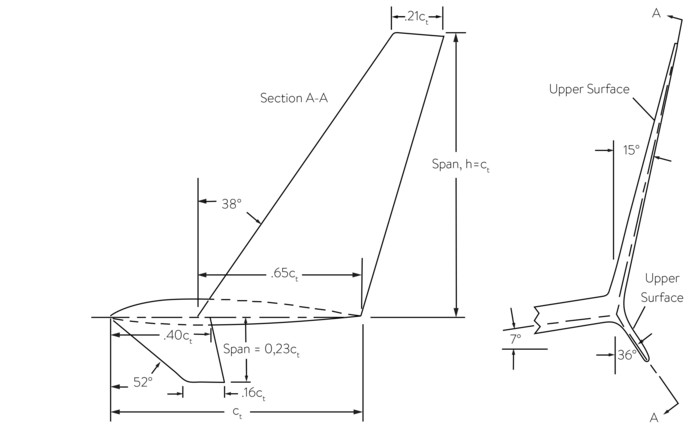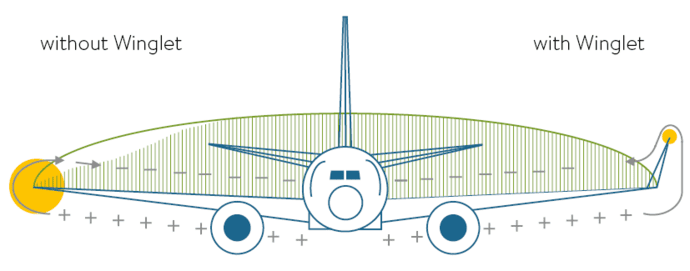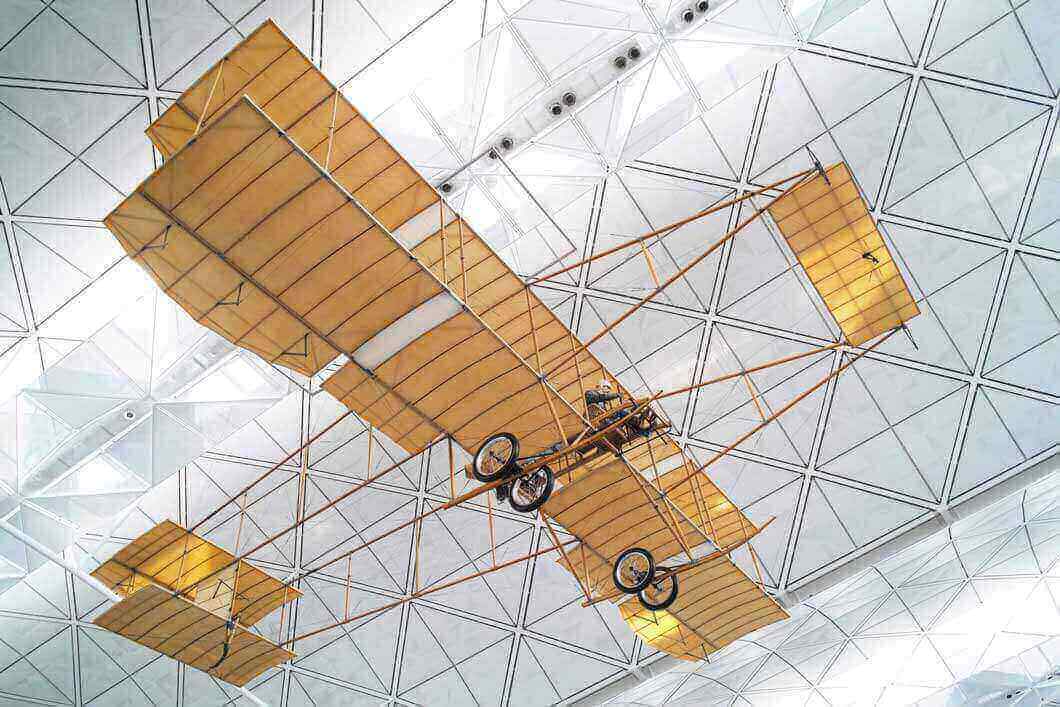Flying better: Winglets make aircraft quieter and more efficient
18.02.2021
Winglets are a proven way to reduce aircraft drag, save fuel, cut carbon dioxide and nitrogen oxide emissions, and reduce noise. They increase range and enable a faster rate of climb.
Vertical surfaces reduce induced drag
The concept of winglets was originally developed in the late 1800s by British aerodynamicist F.W. Lancaster, who patented the idea that a vertical surface at the wing tip would reduce drag generated by vortices. The idea was refined in the late 1970s by NASA scientist Richard Whitcomb.
Whitcomb winglet
The combination of the main upper winglet combined with the smaller part below gives the optimum configuration. Whitcomb's wind tunnel research found that winglets can reduce induced drag by 20 percent.
In practical terms, the winglets were tested on three experimental aircraft built by Boeing, Douglas and Lockheed. Boeing and Douglas decided to adopt the winglet technology for their aircraft types.

How winglets work
The simplest way to reduce induced drag is to eke out the wing, since the additional span generates more lift and thus compensates for the loss of lift. The solution to the problem is the winglets, which ensure that the vortex of induced drag is torn apart and distributed vertically.
Aerodynamic effects
The use of winglets leads to a splitting of the tip vortex. The vortex is displaced and reappears in a smaller form at the winglet tip. The smaller vortex has a lower rotational speed and less kinetic energy and thus a reduction of the induced drag. As a result of the damped induced drag, the influence on the lift decreases. Thus, as the drag decreases, the lift distribution approaches the optimal elliptical distribution. The damping of the vortex results in a weakening of the dangerous wake vortices in the near field of the aircraft. In addition to the effects mentioned above, a winglet reduces the stall speed, i.e. that speed which must at least be present in order to generate usable lift.

Effects on the economic efficiency of aircraft
By reducing wake vortices, a higher frequency of take-offs and landings can be achieved, thus ensuring better utilisation of airports. The lower paraffin consumption increases ranges and the shorter take-off distances reduce noise emissions. Engines work more efficiently and maintenance costs can be saved as a result.
Winglet geometry
There is no all-round winglet that fits every aircraft. It is rather the interaction of countless complicated factors in connection with the given geometry and aerodynamics of an aircraft that leads to the suitable and optimal winglet. Winglets are always designed for the area in which an aircraft spends the longest time. For short-haul flights this is the take-off and landing phase with high lift values and for long-haul flights it is the cruising altitude with low lift values.











